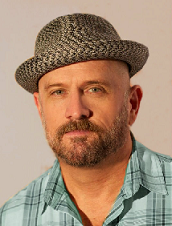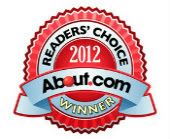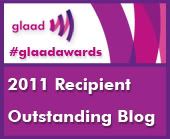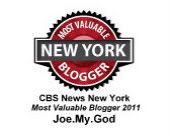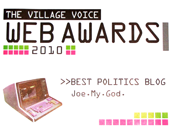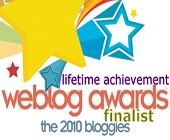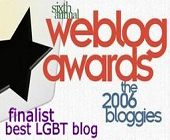Instant Disco History #5: Disco Orchestra
The disco orchestra was a phenomenon of the very earliest years of disco. In the pre-synth and early-synth days, often producers of disco records would engage the talents of entire symphony orchestras, picking and choosing which particular elements best lent themselves to a particular track. Sweeping romantic strings, sassy horns, percolating timpani, whatever, the orchestra members were usually quite glad to have the session work, something that the rock era had largely disposed of.
The members of the Los Angeles Symphony Orchestra, New York Philharmonic Orchestra, and Philadelphia Symphony Orchestra were used on many of these recordings. As synthesizers came into wider use, the glorious, luxurious sound of the full disco orchestra sadly faded away. Below are 7 songs, a mere sampling my all-time favorite disco orchestra tracks. The singles are here for your download, but of course I encourage you to purchase the full-lengths, where available.
1. Love's Theme - The Love Unlimited Orchestra, 1974
 Helmed by Barry White, this 40-piece orchestra was originally created in 1972 to provide backing for White's girl group trio, Love Unlimited, which whom the orchestra had a smash hit in Walking In The Rain With The One I Love . In 1974, with White conducting and producing, the orchestra released its first single, the instrumental Love's Theme, which was a #1 hit on the Billboard Pop Singles chart. Love Unlimited Orchestra had several other hit singles, including Satin Soul and My Sweet Summer Suite. Despite the prominent wacka-wacka guitar sound, then used in every blaxploitation soundtrack, which I generally loathed, Love's Theme remains my all-time favorite disco orchestra track. Trivia note: Jazz saxophonist Kenny G was a member of the Love Unlimited Orchestra.
Helmed by Barry White, this 40-piece orchestra was originally created in 1972 to provide backing for White's girl group trio, Love Unlimited, which whom the orchestra had a smash hit in Walking In The Rain With The One I Love . In 1974, with White conducting and producing, the orchestra released its first single, the instrumental Love's Theme, which was a #1 hit on the Billboard Pop Singles chart. Love Unlimited Orchestra had several other hit singles, including Satin Soul and My Sweet Summer Suite. Despite the prominent wacka-wacka guitar sound, then used in every blaxploitation soundtrack, which I generally loathed, Love's Theme remains my all-time favorite disco orchestra track. Trivia note: Jazz saxophonist Kenny G was a member of the Love Unlimited Orchestra.(Love Unlimited Orchestra, Love's Theme, 20th Century Records, 1974. #1 Pop, #1 R&B. Download Love's Theme. Purchase The Best Of Love Unlimited Orchestra, here.)
2. Magic Bird Of Fire - Salsoul Orchestra, 1977
 Also created in 1972, the Salsoul Orchestra, which won Billboard's Top Disco Orchestra award in '75, '76, and '77, provided the backing for a virtual who's who of early disco artists, including Loleatta Holloway, Claudja Barry, First Choice and Charo (!). New York's Salsoul Orchestra had a monster hit with Magic Bird Of Fire, their stunning reworking of Stravinsky's Firebird Suite. Included among their many other hits are Tangerine and (Ooh I Love It) Love Break, which is credited by many as being the track to which vogueing first began. For me though, Magic Bird will always be my favorite. Those ominous strings! The terrifying horns! Definitely one of the spookiest disco tracks of all time.
Also created in 1972, the Salsoul Orchestra, which won Billboard's Top Disco Orchestra award in '75, '76, and '77, provided the backing for a virtual who's who of early disco artists, including Loleatta Holloway, Claudja Barry, First Choice and Charo (!). New York's Salsoul Orchestra had a monster hit with Magic Bird Of Fire, their stunning reworking of Stravinsky's Firebird Suite. Included among their many other hits are Tangerine and (Ooh I Love It) Love Break, which is credited by many as being the track to which vogueing first began. For me though, Magic Bird will always be my favorite. Those ominous strings! The terrifying horns! Definitely one of the spookiest disco tracks of all time.(Salsoul Orchestra, Magic Bird Of Fire, Salsoul Records, 1977. Download Magic Bird Of Fire. Purchase Salsoul Records: Anthology, here.
3. Spring Rain - Silvetti, 1976
 Spring Rain was the sole disco hit for Argentine composer, producer and pianist Bebu Silvetti. I suppose this track might be considered a little cheesy today, especially with the female chorus going "ah ah ah ah", but I adore this song and I'd bet any gay man in his 40's probably feels the same way. Silvetti went on to produce just about every major star in the Latin music world, including Placido Domingo and Luis Miguel.
Spring Rain was the sole disco hit for Argentine composer, producer and pianist Bebu Silvetti. I suppose this track might be considered a little cheesy today, especially with the female chorus going "ah ah ah ah", but I adore this song and I'd bet any gay man in his 40's probably feels the same way. Silvetti went on to produce just about every major star in the Latin music world, including Placido Domingo and Luis Miguel.(Silvetti, Spring Rain, Salsoul Records, 1976. Download Spring Rain. Purchase Silvetti: Spring Rain, here.)
4. Sing, Sing, Sing - Charlie Calello Orchestra, 1979
 You probably never would have predicted that a reworking of Louis Prima's instrumental big band hit from the 40's, Sing, Sing, Sing, could be turned into a hit dance record, especially one that would get a room full of hundreds of gay men jumping up and down. But kids, when DJ Bob Miro would throw this sucker on at Fort Lauderdale's Backstreet t-dance, you'da thunk the roof was gonna blow off the joint. You haven't lived until you've watch drunken drag queens and bodybuilders trying to disco-Charleston to Sing, Sing, Sing. Trivia: Luther Vandross and Cissy Houston (Whitney's mom) were session vocalists on the other tracks on this album. More trivia: Charlie Calello arranged and produced Odyssey's Native New Yorker.
You probably never would have predicted that a reworking of Louis Prima's instrumental big band hit from the 40's, Sing, Sing, Sing, could be turned into a hit dance record, especially one that would get a room full of hundreds of gay men jumping up and down. But kids, when DJ Bob Miro would throw this sucker on at Fort Lauderdale's Backstreet t-dance, you'da thunk the roof was gonna blow off the joint. You haven't lived until you've watch drunken drag queens and bodybuilders trying to disco-Charleston to Sing, Sing, Sing. Trivia: Luther Vandross and Cissy Houston (Whitney's mom) were session vocalists on the other tracks on this album. More trivia: Charlie Calello arranged and produced Odyssey's Native New Yorker.(Charlie Calello Orchestra, Sing Sing Sing, Midland International Records, 1979. Download Sing, Sing, Sing. Purchase Calello Serenade, here.)
5. Theme From S.W.A.T. - Rhythm Heritage, 1975
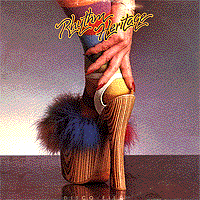 In the mid-70's, every other TV theme song was being turned into a hit record. Welcome Back Kotter, Happy Days, Rockford Files, and many more shows' theme songs hit the Billboard Top Forty. But my personal favorite, of course, was disco orchestra Rhythm Heritage's blistering Theme From S.W.A.T. I would only watch the first few minutes of S.W.A.T., just to catch the opening theme, then I would slam the channel over to Mary Tyler Moore, who had a catchy, but non-disco theme song. Such a queer, I know. Trivia: Ray Parker Jr. (Ghostbusters!) played with Rhythm Heritage.
In the mid-70's, every other TV theme song was being turned into a hit record. Welcome Back Kotter, Happy Days, Rockford Files, and many more shows' theme songs hit the Billboard Top Forty. But my personal favorite, of course, was disco orchestra Rhythm Heritage's blistering Theme From S.W.A.T. I would only watch the first few minutes of S.W.A.T., just to catch the opening theme, then I would slam the channel over to Mary Tyler Moore, who had a catchy, but non-disco theme song. Such a queer, I know. Trivia: Ray Parker Jr. (Ghostbusters!) played with Rhythm Heritage.(Rhythm Heritage, Theme From S.W.A.T., ABC Records, 1975. #1 Pop, #11 R&B. Download Theme From S.W.A.T. )
6. The Bull - Mike Theodore Orchestra, 1977
 Mike Theodore Orchestra's The Bull is one of the most prized 12" singles on the collectors market. The album it came from, Cosmic Wind, yielded a number of hits, most notably the title track and Moon Trek. In 1979 he had another fairly big hit, High On Mad Mountain. I loved The Bull because of the way it made the Spanish guys go crazy on the dancefloor. "Watch out! Here comes the bull! Ole!" Trivia: Mike Theodore was also behind the 1976 disco smash Devil's Gun, by C.J. & Company.
Mike Theodore Orchestra's The Bull is one of the most prized 12" singles on the collectors market. The album it came from, Cosmic Wind, yielded a number of hits, most notably the title track and Moon Trek. In 1979 he had another fairly big hit, High On Mad Mountain. I loved The Bull because of the way it made the Spanish guys go crazy on the dancefloor. "Watch out! Here comes the bull! Ole!" Trivia: Mike Theodore was also behind the 1976 disco smash Devil's Gun, by C.J. & Company.(Mike Theodore Orchestra, The Bull, Westbound Records 1977. #1 Dance Play. Download The Bull. Purchase Mike Theodore Orchestra: Cosmic Wind, here.)
7. Two Hot For Love - THP Orchestra, 1977
 Oh man, if you hated disco, you really hated Two Hot For Love. Really long, over 15 minutes, jazzy and loaded with orgiastic groaning, Two Hot For Love was some serious late night, almost-closing time, choose your bed-partner stuff. "The night is growing longer, my love is growing stronger, we're two hot for love." Side One of Two Hot For Love was usually played all the way through, all 15 minutes, which included the tracks Foreplay, Excitement, Climax and Resolution, which were beat mixed on the LP, as was common on many disco records that year. I loved Two Hot For Love for its sexy hotness and that unforgettable jazzy flute line. THP stood for Three Hats Productions. THP later dropped the "orchestra" from their name and had a successful follow-up called Tender Is The Night.
Oh man, if you hated disco, you really hated Two Hot For Love. Really long, over 15 minutes, jazzy and loaded with orgiastic groaning, Two Hot For Love was some serious late night, almost-closing time, choose your bed-partner stuff. "The night is growing longer, my love is growing stronger, we're two hot for love." Side One of Two Hot For Love was usually played all the way through, all 15 minutes, which included the tracks Foreplay, Excitement, Climax and Resolution, which were beat mixed on the LP, as was common on many disco records that year. I loved Two Hot For Love for its sexy hotness and that unforgettable jazzy flute line. THP stood for Three Hats Productions. THP later dropped the "orchestra" from their name and had a successful follow-up called Tender Is The Night.(THP Orchestra, Two Hot For Love, Butterfly Records, 1977. Download Two Hot For Love. Purchase Best Of Butterfly Records, here.)
I linked it above, but I strongly recommend this excellent and quite comprehensive Wikipedia article, for a fuller understanding of how various orchestras contributed to the early disco sound.
